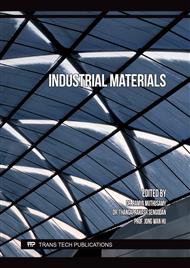p.79
p.89
p.107
p.119
p.125
p.135
p.143
p.149
p.161
Experimental Study on Unconfined Compressive Strength of Natural Rubber Modified Soil Cement
Abstract:
This paper presents the test results of experimental study on unconfined compressive strength of natural rubber modified soil cement. In this study, the cement content, defined as ratio of dry cement weight to dry soil weight, ranged from 4 to 12 percent and the rubber-cement ratio, defined as ratio of natural liquid latex rubber weight to dry cement weight, ranged from 0 to 0.08. It can be observed that the unconfined compressive strength increased with increasing value of rubber-cement ratio for the specimens with cement content of 4 and 8 percent. However, a decrease in unconfined compressive strength with increasing rubber-cement ratio was observed in the specimens with cement content of 12 percent. The effect of rubber-cement ratio on strength was found to be significant at low value for both cases. It was also found that the unconfined compressive strength was increased with increasing cement content. A linear relationship was found for specimens without rubber content. It should be noted that a unique relationship was found for the specimens with rubber content.
Info:
Periodical:
Pages:
143-147
Citation:
Online since:
November 2022
Authors:
Price:
Сopyright:
© 2022 Trans Tech Publications Ltd. All Rights Reserved
Share:
Citation:



